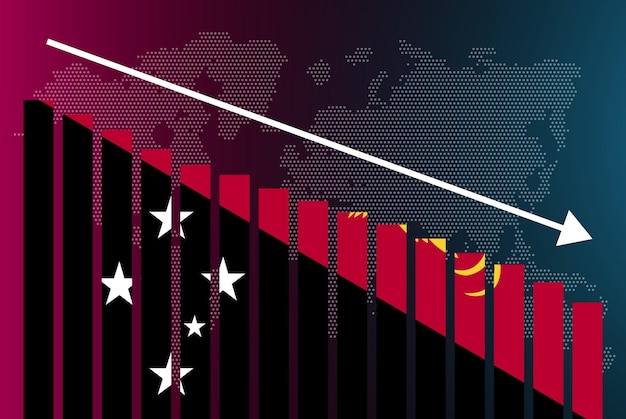The Impact of Inflation on Social Security Benefits: 2025 Outlook

The impact of inflation on Social Security benefits in 2025 will primarily depend on the COLA (Cost of Living Adjustment), which is calculated based on the Consumer Price Index; beneficiaries can expect an adjustment to help maintain their purchasing power amid rising costs.
Understanding the **impact of inflation on Social Security benefits: what to expect in 2025** is crucial for retirees and those planning for retirement. As the cost of goods and services rises, Social Security benefits must adjust to maintain beneficiaries’ purchasing power. Let’s delve into how inflation affects these vital benefits.
Understanding Inflation’s Role in Social Security
Inflation plays a significant role in determining the financial well-being of Social Security recipients. Without adjustments for inflation, the real value of Social Security benefits would erode over time, leaving seniors with reduced purchasing power.
How is Inflation Measured?
The primary measure used to calculate Social Security’s cost-of-living adjustment (COLA) is the Consumer Price Index for Urban Wage Earners and Clerical Workers (CPI-W). This index tracks changes in the prices of a basket of goods and services typically purchased by urban wage earners and clerical workers.
The Importance of COLA
The Cost of Living Adjustment (COLA) is an annual adjustment to Social Security and Supplemental Security Income (SSI) benefits. It helps ensure that the purchasing power of these benefits keeps pace with inflation.

Here are some key points about COLA:
- COLA is calculated each year based on the CPI-W from July, August, and September.
- The Social Security Administration (SSA) announces the COLA in October.
- The COLA goes into effect in January of the following year.
In conclusion, inflation, as measured by the CPI-W, directly affects the COLA, which in turn determines the annual adjustment to Social Security benefits, safeguarding the financial stability of beneficiaries by maintaining their purchasing power.
Factors Influencing the 2025 COLA
Several economic factors will influence the COLA for Social Security benefits in 2025. Keeping an eye on these factors will provide insights into potential benefit adjustments.
Predicting the exact COLA for 2025 is challenging, but understanding the key economic indicators can help forecast potential outcomes. Here are the main factors that will play a role:
- Inflation Rates: The most significant factor is the rate of inflation as measured by the CPI-W. Higher inflation generally leads to a larger COLA.
- Economic Growth: Economic growth can influence inflation. Strong economic growth might lead to increased demand and potentially higher inflation.
- Federal Reserve Policies: The Federal Reserve’s monetary policies, such as interest rate adjustments, can influence inflation rates.

Expert Predictions for 2025
While it is impossible to know the exact COLA for 2025, economists and financial analysts offer predictions based on current economic trends and forecasts. These predictions can give beneficiaries a general idea of what to expect.
In conclusion, the COLA for 2025 will be shaped by inflation rates, broader economic growth, and Federal Reserve policies. Monitoring these factors and considering expert predictions can help Social Security recipients anticipate changes to their benefits.
Historical COLA Adjustments and Trends
Examining historical COLA adjustments provides valuable context for understanding potential future adjustments. The past can offer insights into the variability and trends of these annual changes.
By examining past COLA adjustments, we can learn important lessons about how inflation impacts Social Security benefits:
- Volatility: COLA adjustments can vary significantly from year to year due to changing economic conditions.
- Impact of Economic Events: Major economic events, such as recessions or periods of rapid inflation, can significantly affect COLA.
- Long-Term Trends: Over the long term, COLA adjustments generally keep pace with inflation, but there can be short-term discrepancies.
Notable COLA Adjustments
Some years have seen particularly large or small COLA adjustments. Understanding the circumstances surrounding these adjustments can be informative.
In conclusion, a review of historical COLA adjustments highlights the volatility and impact of economic events on Social Security benefits. This historical knowledge provides a valuable reference point for understanding future COLA adjustments.
The Impact of COLA on Different Beneficiaries
The COLA affects different Social Security beneficiaries in various ways. Understanding these nuanced impacts is crucial for appreciating the full scope of the yearly adjustment.
Retirees
For retirees, Social Security benefits often constitute a significant portion of their income. A higher COLA can help them maintain their living standards amid rising costs.
Disabled Individuals
Disabled individuals receiving Social Security Disability Insurance (SSDI) also rely on COLA to keep pace with inflation. The COLA ensures that their benefits maintain the same purchasing power.
Survivors
Survivors receiving benefits based on a deceased worker’s earnings also benefit from COLA. These adjustments help them manage expenses and maintain financial stability.
Understanding the varied impacts of COLA on retirees, disabled individuals, and survivors illustrates its importance in maintaining financial well-being across diverse beneficiary groups. The COLA serves as a critical mechanism to mitigate the adverse effects of inflation.
Planning and Preparing for Benefit Changes
Understanding potential changes to Social Security benefits allows recipients to make informed financial plans. Preparation is key to managing any fluctuations in income.
There are several steps beneficiaries can take to prepare for changes in Social Security benefits:
- Stay Informed: Keep up-to-date with announcements from the Social Security Administration (SSA) and follow economic news that may affect COLA.
- Budgeting: Create a budget that accounts for potential changes in benefits and expenses.
- Financial Planning: Work with a financial advisor to develop a long-term financial plan that considers various scenarios.
Resources for Beneficiaries
Numerous resources are available to help Social Security recipients understand and manage their benefits. Taking advantage of these resources can provide valuable support.
- Social Security Administration (SSA): The SSA website provides detailed information about benefits, COLA, and other important topics.
- Financial Advisors: Financial advisors can offer personalized guidance on managing finances and planning for retirement.
- Nonprofit Organizations: Many nonprofit organizations offer resources and support to seniors and disabled individuals.
In conclusion, staying informed, budgeting effectively, and seeking financial advice can help Social Security recipients prepare for any changes in their benefits. Taking advantage of available resources can provide additional support and guidance.
Future Outlook for Social Security and Inflation
The long-term outlook for Social Security and inflation is a topic of concern for many. Understanding these future trends can help beneficiaries and policymakers make informed decisions.
Potential Reforms to COLA Calculation
Some policymakers have proposed changes to how COLA is calculated. These proposals often aim to make the calculation more accurate or to reduce government spending.
Impact of Demographic Changes
Demographic changes, such as an aging population, can affect the solvency of Social Security. As more people retire and fewer workers contribute, the system faces increased financial pressure.
The long-term outlook for Social Security and inflation involves potential reforms to COLA calculation and challenges posed by demographic changes. Understanding these trends is vital for beneficiaries and policymakers to ensure the sustainability of Social Security.
| Key Point | Brief Description |
|---|---|
| 📈 Inflation Measurement | COLA is based on the CPI-W to reflect cost changes. |
| 💰 COLA Impact | Adjusts benefits for inflation, affecting various recipients. |
| 📊 Economic Factors | Inflation rates, economic growth, and Fed policies influence COLA. |
| 📅 Future Planning | Stay informed and budget wisely for benefit changes. |
Frequently Asked Questions (FAQ)
▼
The COLA is determined annually based on the percentage increase in the Consumer Price Index for Urban Wage Earners and Clerical Workers (CPI-W) from the third quarter of one year to the third quarter of the next.
▼
The Social Security Administration (SSA) typically announces the Cost of Living Adjustment (COLA) for the upcoming year in October. This announcement provides beneficiaries with insights into the expected changes.
▼
Stay informed about economic trends, create a detailed budget, and consult a financial advisor for personalized guidance. Keeping track of resources provided by SSA can also provide valuable support.
▼
The main economic factors are inflation rates, overall economic growth, and the monetary policies set by Federal Reserve. Economic stability plays a significant role in determining the level of COLA.
▼
While the COLA aims to keep pace with inflation, the degree to which it offsets inflation’s effects can vary. Factors like healthcare costs and regional price differences can affect your spending habits.
Conclusion
Understanding the **impact of inflation on Social Security benefits: what to expect in 2025** is vital for beneficiaries to plan and manage their finances effectively. By staying informed about economic trends and potential COLA adjustments, individuals can better prepare for the future.






